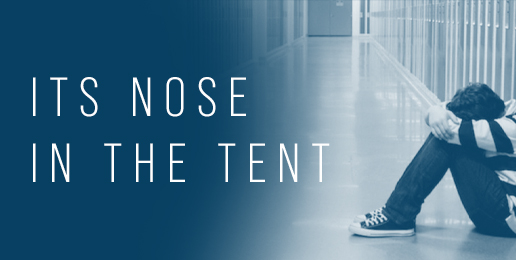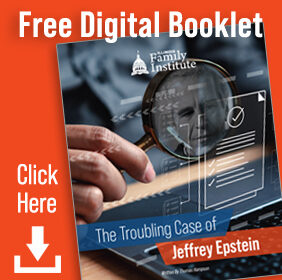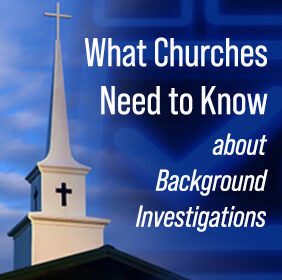
The legislative effort to address bullying in Illinois started in 2006 when the Illinois School Code was amended.
The act required schools to establish an anti-bullying policy, inform students and parents about it, and keep their updated policies on file with the Illinois State Board of Education. In 2007, the law was amended to include a definition of bullying.
Then, in 2010, Governor Pat Quinn signed a bill to create a school bullying prevention task force for one year. The law required the State Superintendent of Education to appoint stakeholders to a task force to investigate the problem of bullying in schools and devise a solution.
At the time, religious schools were exempt from the requirements.
After its months-long investigation, the task force found, in part:
“Recent youth suicides only highlight a persistent problem in US schools – bullying. Illinois is not immune to this; indeed, bullying and school violence are serious problems in our schools across the state (GLSEN, 2006). Being a target or victim of bullying has long been recognized [as] having short- and long-term psychological effects on children and adolescents. Recent studies are supporting what we have suspected for years. Bullying and violence have serious consequences to youth, schools, and communities (Berger, 2007; Chicago and Illinois YRBS 2007; Espelage & Horne, 2007).”
The same bill that created the task force also updated the law on bullying. The bill stated in part:
“Because of the negative outcomes associated with bullying in schools, the General Assembly finds that school districts and non-public, non-sectarian elementary and secondary schools should educate students, parents and school district or non-public, non-sectarian elementary of secondary school personnel about what behaviors constitute prohibited (emphasis added) bullying.”
Does this mean the General Assembly had in mind some bullying was permissible? What would that be?
The bill goes on to describe prohibited bullying as:
“Bullying on the basis of actual or perceived race, color, religion, sex, national origin, ancestry, age, marital status, physical or mental disability, military status, sexual orientation, gender-related identity or expression, unfavorable discharge from military service, association with a person or group with one or more of the aforementioned actual or perceived characteristics, or any other distinguishing characteristic is prohibited in all school districts and non-public, non-sectarian elementary and secondary schools. . . “
Really? How many high school students even have a military status, much less were unfavorably discharged from military service? Only males register for the draft, and they are not required to register until the age of 18.
Why these specifics? Why not mention hair color, weight, eyesight, intellect, agility?
Better yet, why not use a definition like this:
“Acts or written or spoken words intended to intimidate or harass a person or to cause physical harm to a person or his or her property?”
Does every possible target or kind of bullying need to be enumerated?
The task force first decided Illinois schools should continually gather data on bullying in the schools to develop more effective programs to combat the problem. In other words, the first order of business should be to expand the bureaucracy.
Why not?
Next, they addressed how to turn around the school environment to prevent bullying. According to the report:
“Bullying and school violence are part and parcel of the same issue: interpersonal aggression.
“Schools are systems and thus are impacted by systemic cultural issues such as racism, sexism, classism, adultism, ableism and homophobia that contribute to negative and hostile environments for youth and adults.
“Social and emotional learning (SEL) provides students and adults with the skills needed to interact positively and is a necessary condition for development and learning.
“Zero-tolerance policies and punitive discipline are ineffective in improving behaviors, and disproportionately impact students of color.
“School Improvement Processes, Response to Intervention (RtI) Plans and systems-based frameworks that fully address student’s academic and behavioral strengths and needs serve as solid supports for fully implementing SEL.”
The task force found that bullying was the result of systemic issues? Racism, sexism, homophobia are driving bullying?
I’m sure these issues play a role in some cases, but the claim that these are central to the problem is wrong. In reviewing the task force members, I don’t see a single criminologist on the list. See for yourself:
Darren Reisberg, Illinois State Board of Education
Barbara Shaw, Illinois Violence Prevention Authority
Rocco Claps, Illinois Department of Human Rights
Sarah Migas, Illinois Attorney General
Grace Hong Duffin, Illinois Department of Human Services
Shannon Sullivan, Safe Schools Alliance
Malik Nevels, African American Coalition
Lonnie Nasatir, Anti-Defamation League
Julie Justicz, Health and Disability Advocates
Peggy Thurow, Carpentersville CUSD 300
Lisa Brennan, Carpentersville CUSD 300
Mike Penicook, Rantoul School District 137
Maria McCarthy, Rantoul School District 137
Josh Gray, Chicago Public Schools
Kelly Keating, East Aurora District 131
Stacey Horn, University of Illinois Chicago
Dorothy Espelage, University of Illinois
Anna Rangos, Student/ Maine South High School
Sukari Stone, Student/ Whitney Young College Prep
Marc Kiehna, Regional Superintendent Monroe/Randolph Regional Office of Education
Matthew John Rodriguez, Illinois Parent Teacher Association
Brooke Whitted, President, Leslie Shankman School Corporation
Susan Goodwin, President, Quincy Human Rights Commission
According to these selected authorities, the solution to this problem is to double down on counseling and ramp up “Social-Emotional Learning” to help children build better relationships. They found that punitive measures were unsuccessful, and the approach needed to be scrapped.
Preposterous.
For over a century, we have known that punitive measures work and that the certainty of consequences, not necessarily the severity of consequences, deters behavior. If punitive measures were not working, the first thing they should have looked at was the number of bullies who got away with no consequences. You can be sure that was common.
The real reason the task force disparaged punitive measures was that they were implemented more frequently against minority students. Yet, such implementation was never shown to be based on any prejudice. The outcome was shown as disproportional, so the motivation was presumed to be discriminatory.
Nevertheless, the task force recommendations were later implemented into our current law. It applies to all schools, public and private, except sectarian schools. It requires every school to have a bullying policy based on the model policy developed by the State Board of Education.
The policy must include a series of provisions, including reporting requirements to the state and parents, a prompt investigation of any incident, the interventions the school will take in response to bullying, a statement prohibiting reprisals against a person who reports bullying, a process of annually reviewing and evaluating the reports of bullying, as well as a few other requirements.
It sets up a particular set of investigation, analysis, and reporting requirements, the costs for which must be paid by the local schools.
On the surface, all of this seems reasonable, doesn’t it? Who can be against efforts to eliminate or reduce bullying in schools?
Apparently seizing on that logic, Margaret Croke, a young Lincoln Park Democrat, recently introduced HB 4133, requiring all religious schools to be subject to the same anti-bullying provisions as all other schools.
Why? Have religious schools suddenly been overrun by bullies? I must have missed those reports. On the other hand, what is the problem with extending an anti-bullying law to religious schools?
For one thing, do we want the State to get its giant secular nose into the religious tent? Once the nose is in, wouldn’t it try to get all the way in?
More importantly, the views between the State and religion on the origin of the problem of bullying and its solution are vastly different. As I mentioned above, the State has declared that bullying is the result of systemic racism, sexism, homophobia, etc. But is this true?
While I agree, as a Christian, that bullying is a systemic problem, the systemic problem is not any “ism” or phobia. It is sin. We live in a fallen world, and that’s the problem, not some “ism.”
Because religious views on the problem are vastly different from those of the State, you would expect the perceived solution to be vastly different as well. And they are.
The state thinks counseling and Social Emotional Learning (SEL) are the solution. SEL is a teaching framework that can be filled with whatever secular morality that’s in vogue—critical race theory, critical gender theory, postmodernism, queer studies, etc. The anti-bullying law presumes that bullying can be reduced by teaching children relationship skills, self-awareness, self-management, social awareness, and responsible decision-making. The various secular moralities inform these skills.
Let’s take social awareness as an example. Gender theory would lead to teaching children that a person’s gender can be fluid. Critical race theory would lead to teaching children that race determines whether they are the oppressed or the oppressor in our culture. And so on. If children are taught this secular made up morality, bullying will disappear, so they claim.
Christians would say the solution is Christ; accepting Him, repenting our sins, and following Him is the only way.
I’m sure the other religions have their own prescriptions.
The point is that the views on the source of the problem and on the solution are so vastly different that State involvement in this is incompatible with a religious school’s approach.
Wouldn’t it also violate the First Amendment of the U.S. Constitution to become involved in prescribing a secular approach to what we see as a spiritual issue? It seems like it would to me.
This bill should die in committee.
Take ACTION: Please click HERE to fill out a witness slip in opposition to this legislation before Wednesday!
More ACTION: Click HERE to send an email to your state representative to ask him/her to vote NO to HB 4133.

























